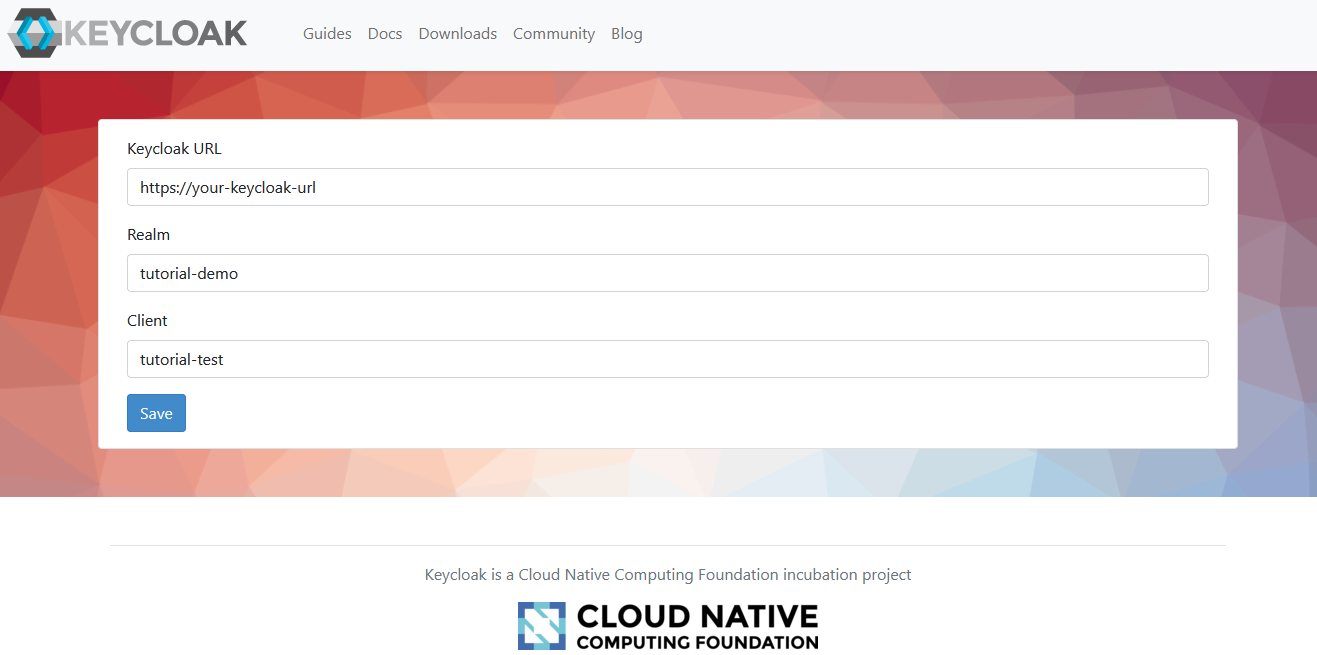Username or email and password
Overview
The traditional method where users provide a unique username or email and password combination through a login form.
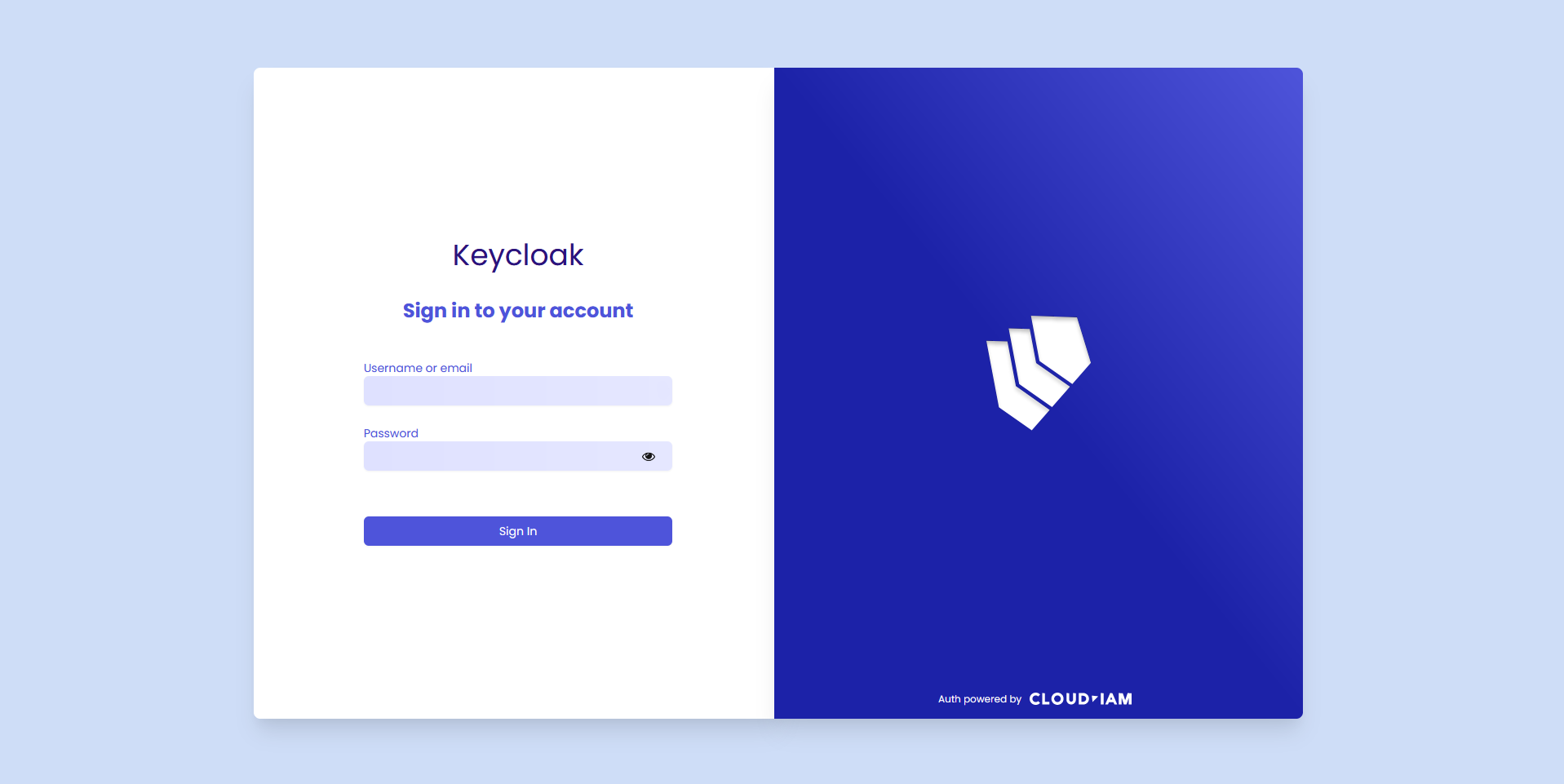
Use cases
IAM
This authentication method is commonly employed in customer-facing applications, making it particularly valuable for businesses offering online services such as e-commerce platforms, mobile applications, or online banking.
It ensures a seamless and secure login experience for customers, enhancing user satisfaction and trust.
CIAM
This authentication approach also serves the needs of business-to-business (B2B) companies seeking to streamline access for their partners or vendors. By leveraging existing external Active Directory (AD) or LDAP systems, organizations can centralize account management and standardize login methods across their ecosystem.
This facilitates efficient collaboration while maintaining robust security measures.
Pros & Cons
Pros
Enhanced user experience: This authentication method offers a familiar and straightforward login process for users, contributing to a positive user experience.
Versatility: Suitable for a wide range of use cases, including customer-facing applications (CIAM) and business-to-business (B2B) scenarios with external AD or LDAP integration (IAM).
Cons
- Security concerns: While widely used, passwords can be vulnerable to various security threats such as brute-force attacks, phishing, and password reuse.
Supported by Keycloak
Yes, natively supported and configurable on Managed Keycloak by Cloud-IAM.
Configuration
How to configure Username or Email and Password on Keycloak
The following tutorial provides a quick example of configuring the "Username or Email and Password" method to help you navigate Keycloak and test it with the Keycloak test application (https://www.keycloak.org/app/). This tutorial does not cover all the necessary security best practices for a complete configuration.
Create a new Keycloak realm
- From Keycloak console, select dropdown list (1.)
- Click on
Create Realm(2.) - Name your new realm (here : tutorial-demo)
- Click on
Create

Realm setting
- Select your new realm from the dropdown list (here : tutorial-demo)
- Click on
Realm Setting - Then click on
Login
On this part you can define multiple rules such as :
- User registration
- Forget Password
- Remember Me
- [...]
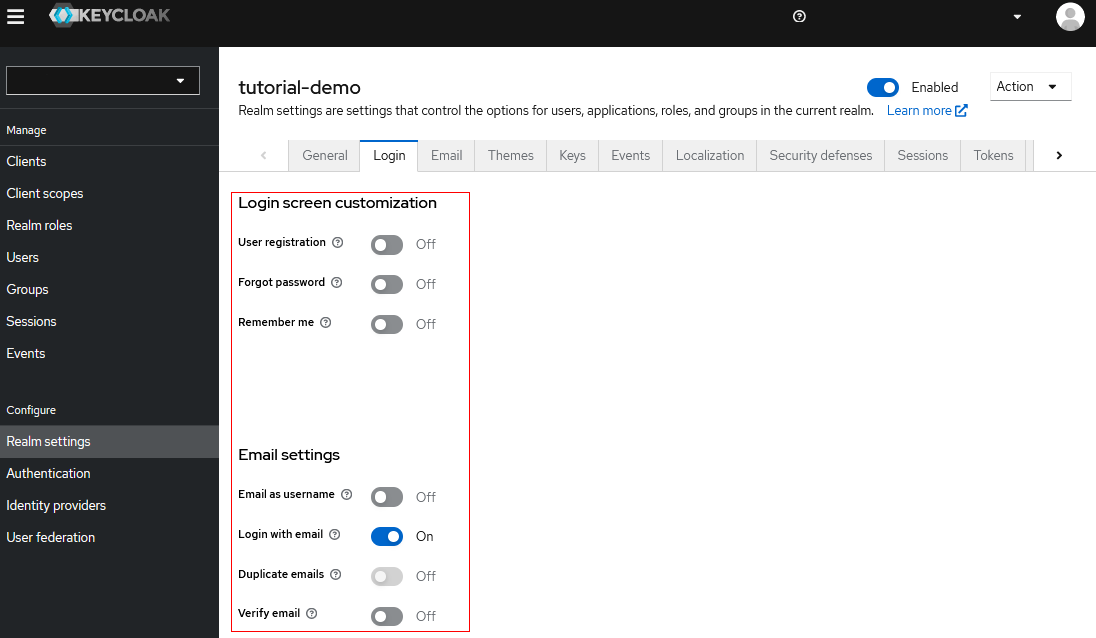
Client settings - Step 1 "General settings"
- From Keycloak console click on
Clients - Then click on
Create client - Enter the
Client IDof your client: here “tutorial-test”, provide a name “tutorial-test-client” - Click on
Next
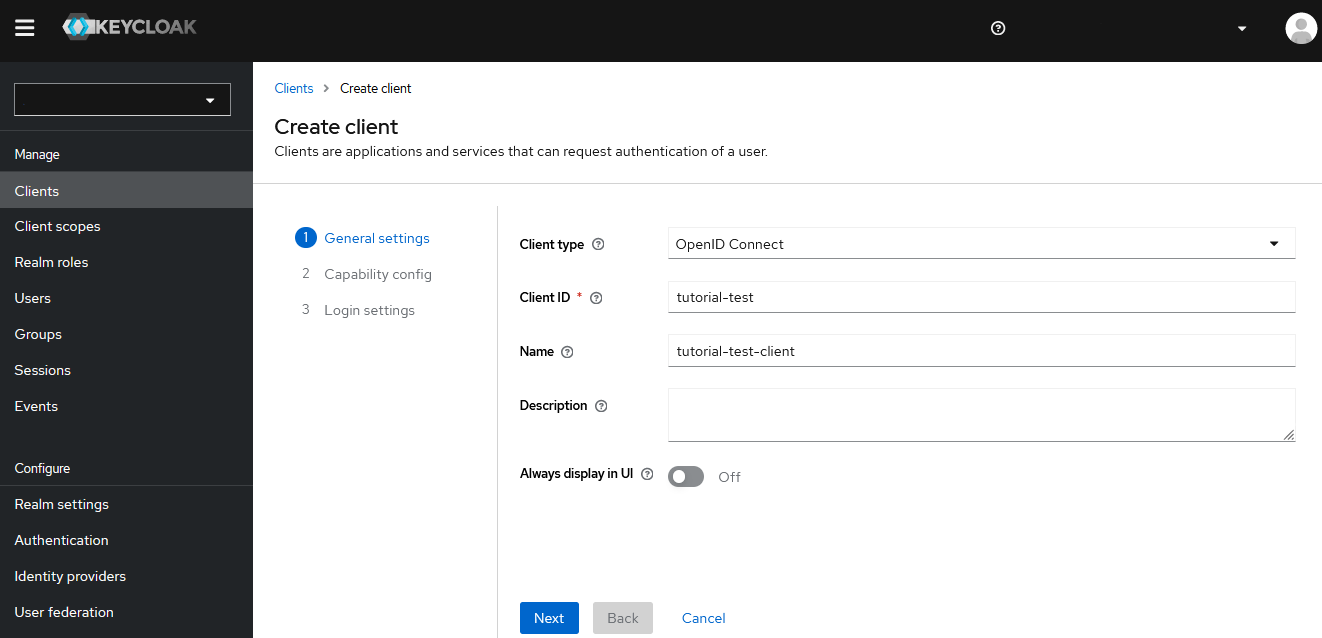
Client settings - Step 2 "Capability Config"
- Enable
Client authentication - Unselect
Direct access grants - Click on
Next
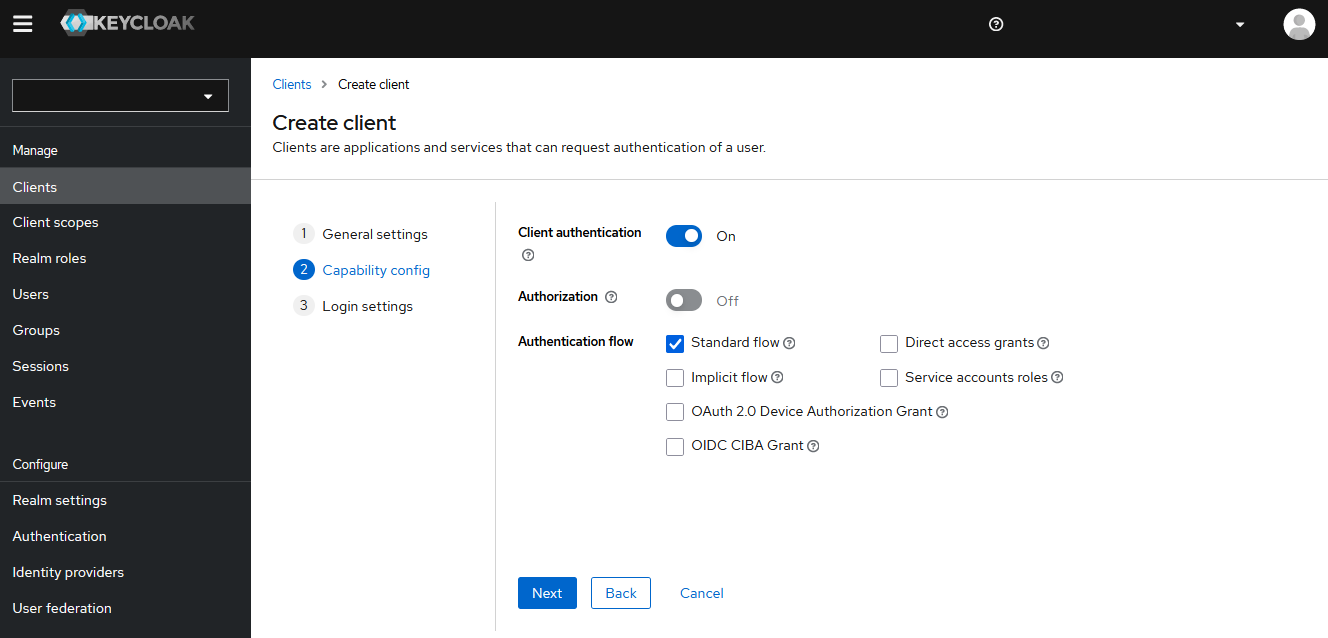
Client settings - Step 3 "Login settings"
- Complete:
Valid redirect URIs(Keycloak test Application , here : "https://www.keycloak.org/app/*")Valid post logout redirect URIs(here : "+")Web origins(here : "+")
- Click on
Save - Then log out of your Keycloak
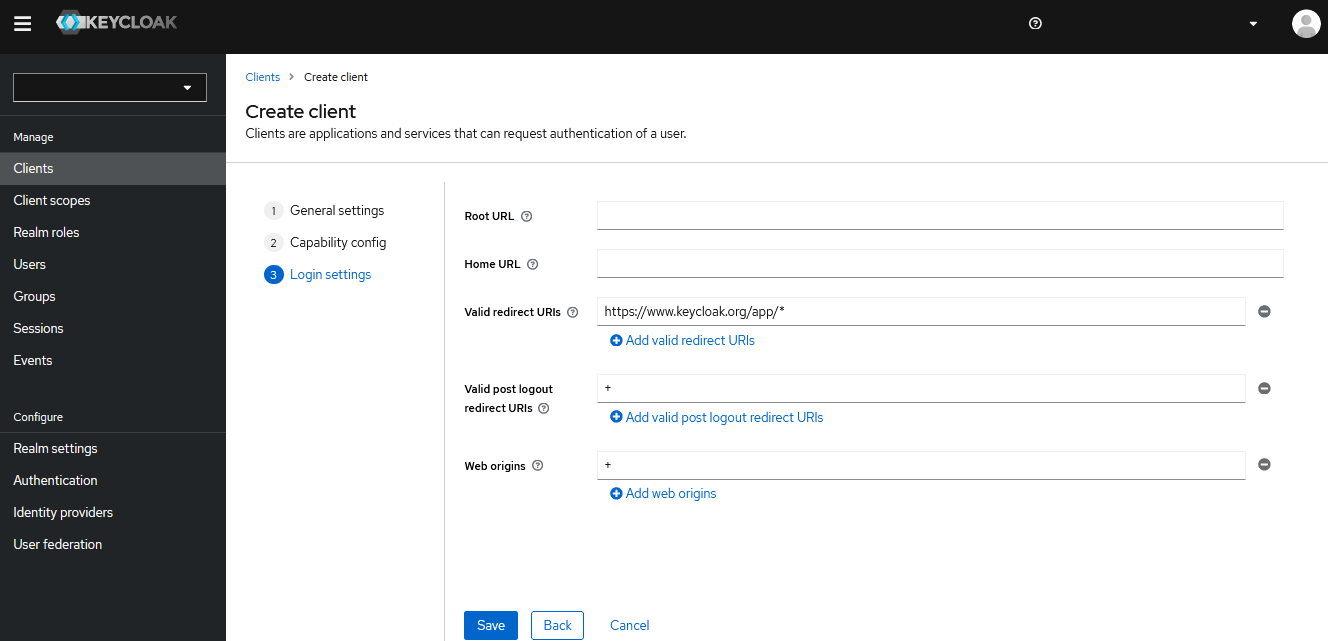
Client settings - Step 4 "Keycloak test application"
- On another window browser open: Keycloak test application
- Complete your:
Keycloak URL(here : https://your-keycloak-url)Realm Name(Previously new realm created here : “tutorial-demo")Client(Previously client ID created here : “tutorial-test”)
- Click on
Save - Then click on
Sign in
As you can see that you have been successfully redirected to your Keycloak to connect with your login / password from Keycloak test application.
